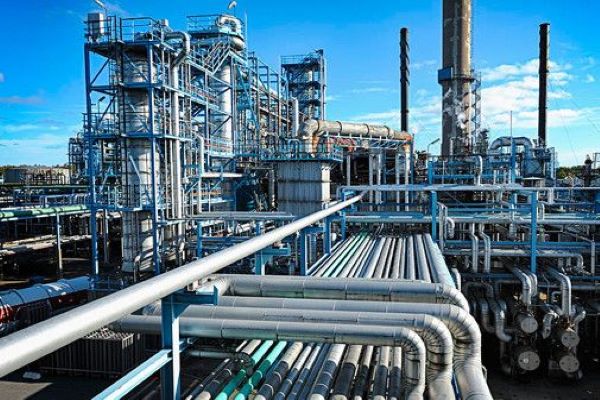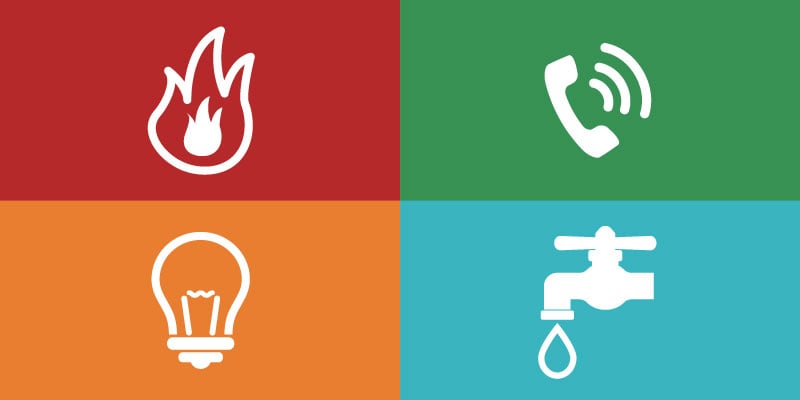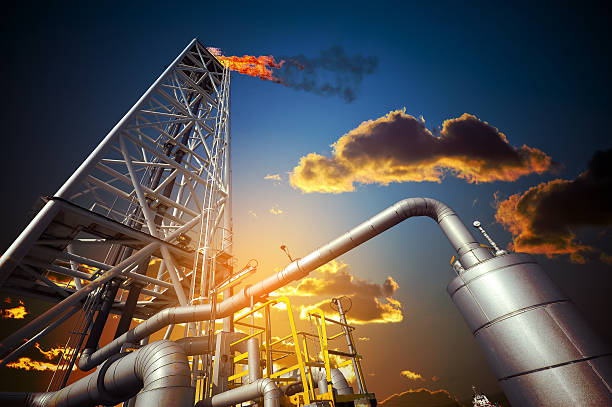In a world where natural disasters are on the rise, having a solid disaster preparedness plan is no luxury—it’s a necessity. According to the SEMrush 2023 Study and the Energy Storage Association, the frequency of natural disasters and the economic impact of power outages are alarmingly high. Premium disaster preparedness models offer high – tech solutions, like advanced data analytics for risk assessment and Connected Microgrids for power backup, far superior to counterfeit or basic plans. Enjoy a Best Price Guarantee and Free Installation Included when you invest in the right systems. Don’t wait, safeguard your home or business now!
Disaster preparedness planning
Did you know that according to a SEMrush 2023 Study, the number of natural disasters has been on a steady rise in the past decade? This makes effective disaster preparedness planning more crucial than ever.
Key elements in a comprehensive plan
Prevention/Mitigation

Prevention and mitigation are the first lines of defense in a disaster preparedness plan. This involves identifying potential hazards and taking steps to reduce their impact. For example, in areas prone to flooding, building flood barriers can significantly reduce the damage caused by floods. Pro Tip: Regularly inspect and maintain infrastructure such as levees and dams to ensure they are in good working condition.
Risk – Informed Planning
Risk – informed planning is all about understanding the specific risks your area faces and tailoring your plan accordingly. Different regions have different natural disaster risks, such as earthquakes in California or hurricanes in Florida. For instance, in Florida, modern building codes have been designed to help communities better withstand the impacts of hurricanes, as seen in the neighborhood of Apollo Beach. A homeowner there who followed these codes was able to better protect their home during a recent hurricane. Pro Tip: Use local geological and meteorological data to assess the risks in your area accurately.
Preparedness Mindset
A preparedness mindset is essential for the success of any disaster preparedness plan. This means instilling in individuals and communities the importance of being ready for emergencies. Governments, NGOs, and local communities should work together to balance traditional wisdom with cutting – edge science. For example, some communities have used traditional knowledge about earthquake – resistant building techniques combined with modern engineering methods. Pro Tip: Conduct regular awareness campaigns to educate the public about disaster preparedness.
Recommended drill frequency
Regular drills are a crucial part of disaster preparedness planning. According to industry benchmarks, organizations should conduct emergency drills at least once a quarter. These drills help employees become familiar with emergency protocols and procedures, reducing panic and chaos during real – life emergencies. For example, a large corporation that implemented monthly fire drills saw a significant improvement in employee response times during a real fire incident. Pro Tip: Vary the scenarios in your drills to cover different types of disasters and unexpected situations.
As recommended by [Industry Tool], it’s important to have a well – defined disaster preparedness plan. Top – performing solutions include using advanced data analytics to assess risks and leveraging technology for remote management of emergency response systems. Try our online disaster preparedness simulator to test your plan’s effectiveness.
Key Takeaways:
- A comprehensive disaster preparedness plan should include prevention/mitigation, risk – informed planning, and a preparedness mindset.
- Regular drills are essential, with a recommended frequency of at least once a quarter.
- Use local data and combine traditional wisdom with modern science for effective planning.
Emergency response protocols
Did you know that in the past decade, hundreds of case studies have analyzed the responses to major natural disasters? This vast amount of data helps shape more effective emergency response protocols today.
Specific protocols for immediate threats
Protection of response workers
First responders are at the forefront during disasters. Protecting them is crucial to ensure the continuity of emergency operations. For example, in wildfire situations, proper firefighting gear is essential. A SEMrush 2023 Study found that in regions where firefighters had access to high – quality personal protective equipment (PPE), injury rates were significantly lower.
Pro Tip: Emergency response agencies should regularly inspect and update the PPE of their workers. Conduct training sessions on how to properly use and maintain the equipment.
Water and wastewater management
When natural disasters strike, sustaining drinking water and wastewater system operations is critical to protecting public health and the environment. Past incidents have shown that water utility personnel often face challenges. For instance, during floods, there is a high risk of water contamination.
A technical checklist for water and wastewater management during disasters could include:
- Ensure backup power sources for water treatment plants are available.
- Regularly test water quality and be prepared to issue boil – water advisories if necessary.
- Have a plan to quickly repair any damaged water and sewage pipes.
Pro Tip: Water utility companies should establish good relationships with local emergency response agencies. This can help in getting quick access to resources during disasters.
General emergency response frameworks
Every business should develop and implement an emergency plan for protecting employees, contractors, and visitors. The Ready.gov website provides 10 steps for developing an emergency response plan, which includes understanding potential hazards and defining appropriate protective actions.
Case Study: In a company that regularly conducts emergency drills, employees were able to evacuate quickly during a real – life fire emergency. This not only saved lives but also minimized property damage.
Pro Tip: Coordinate emergency planning with public emergency services to stabilize incidents involving the hazards at your facility.
Interaction with utility backup systems
Good relationships and information sharing between water and electric utilities and local emergency response agencies are critical to getting power quickly restored after an outage. For example, if a power grid is damaged during a hurricane, backup generators can be a lifesaver for critical facilities like hospitals.
A comparison table of different utility backup systems:
| Backup System | Cost | Sustainability | Efficiency |
|---|---|---|---|
| Connected Microgrid | High initial cost, long – term savings | High | High |
| Battery Storage Systems | Medium | High | Medium |
| Traditional Generators | Low initial cost, high running cost | Low | Medium |
Pro Tip: Businesses should assess their power needs and choose the most appropriate backup system based on cost, sustainability, and efficiency.
Key Takeaways:
- Protecting response workers with proper PPE is essential for effective emergency response.
- Water and wastewater management requires a technical checklist and good relationships with emergency agencies.
- Developing a general emergency response framework and coordinating with public services is crucial for businesses.
- Choosing the right utility backup system can significantly improve disaster resilience.
As recommended by industry leaders, investing in advanced emergency response protocols and backup systems can save lives and reduce the economic impact of disasters. Top – performing solutions include Connected Microgrids and battery storage systems for utilities. Try our disaster preparedness assessment tool to see how your organization measures up.
Natural disaster readiness
Lessons from past disasters
Importance of a Learning Culture
In the past decade, hundreds of case studies have analyzed responses to major natural disasters, with experts from various fields weighing in (Source [1]). It’s a sobering statistic that the need for effective disaster response grows as natural disasters become more frequent due to climate change. For instance, the number of wildfires in the western United States has been on the rise, causing billions of dollars in property damage and endangering countless lives (SEMrush 2023 Study).
A case in point is the 2024 disasters. As emergency responders battled wildfires in the Los Angeles area, there was a collective reflection on the lessons learned to inform future rebuilding (Source [2]). This shows the practical importance of learning from past events. Pro Tip: Agencies at all levels of government and in all emergency – response disciplines should actively foster a culture of learning from past disasters. This culture can help prevent future losses by ensuring that the right lessons are identified and applied.
Establishing a Comprehensive Disaster Management Framework
The entire disaster management system often hinges on the ‘Emergency Response Paradigm’ (ERP) as per the UN in 2010 (Source [3]). Historically, some policies, like those in Pakistan, were too narrow, focusing only on specific hazards such as flooding.
To create a comprehensive framework, it’s essential to work through many emergency scenarios. Planning should consider the unexpected and the "it could never happen here" situations. For example, a business in a coastal area might plan not only for hurricanes but also for potential tsunamis or severe storm surges. Pro Tip: Businesses should develop and implement an emergency plan for protecting employees, contractors, and visitors. As recommended by Ready.gov, follow the 10 steps for developing an emergency response plan, which includes defining appropriate protective actions for each hazard and coordinating with public emergency services (Source [4]).
Role of Traditional Wisdom and Cutting – Edge Science
Disaster management is an evolving discipline that benefits from balancing traditional wisdom with cutting – edge science (Source [5]). Traditional knowledge passed down through generations can offer valuable insights into natural warning signs and effective community – based responses. For example, indigenous communities in some areas have long – standing knowledge of how to predict floods based on natural indicators like the behavior of animals and plants.
On the other hand, modern science can provide advanced forecasting and early – warning systems. For instance, satellite technology can help predict the path of hurricanes with a high degree of accuracy. Pro Tip: Governments, NGOs, and local communities should actively seek to integrate traditional wisdom and scientific advancements. This approach can close the gaps exposed by past catastrophes and transform lessons learned into widespread practice.
Key Takeaways:
- A learning culture is vital in disaster management to prevent future losses.
- A comprehensive disaster management framework should consider all possible emergency scenarios.
- Balancing traditional wisdom and cutting – edge science can enhance the effectiveness of disaster preparedness and response.
Try our disaster readiness self – assessment tool to see how prepared your organization is for natural disasters.
As recommended by FEMA, ensure that your disaster management plan is regularly updated to reflect the latest lessons learned and scientific advancements.
Utility backup systems
Did you know that according to the Energy Storage Association, power outages cost the U.S. economy an estimated $150 billion annually? Having reliable utility backup systems is crucial for businesses and homes alike to mitigate losses during such events.
Cost – effective systems for different scales
Small – scale Residential
For small – scale residential properties, a popular choice is the EcoFlow Delta Pro. With an estimated cost per kWh of about $750, it has a capacity of 13.5kWh and a lithium – iron phosphate (LFP) battery type. A homeowner in an area with fewer than five outages per year but long – lasting ones purchased a setup of 1 × EcoFlow DELTA Pro Ultra Inverter + 4 × Batteries + 1 × Smart Home Panel 2 to save on electricity bills. Pro Tip: When considering a residential backup system, assess your essential appliances’ power needs, such as refrigerators and lights, and choose a system that can handle those loads. As recommended by EnergySage, this helps in selecting a cost – effective solution.
Medium – scale Commercial
Medium – scale commercial buildings need backup systems that can handle more power. While not as well – known as some, certain battery storage systems like those from companies focusing on mid – range commercial backup can be a great option. They can smooth out fluctuations in renewable energy generation if the business uses solar or wind power and reduce dependency on the grid. For instance, a local grocery store implemented a medium – sized battery storage system. This allowed them to keep essential refrigeration units running during a power outage, preventing spoilage of perishable goods. SEMrush 2023 Study shows that such systems can reduce energy costs for medium – scale businesses by up to 20% over time. Pro Tip: Look for systems that are scalable, so you can add capacity as your business grows.
Large – scale Industrial
Large – scale industrial facilities require high – capacity backup systems. These may include large – scale battery energy storage systems (BESS) that can store a substantial amount of energy to power heavy machinery and operations. An industrial factory was able to resume operations quickly after a power outage due to its advanced BESS. This not only saved production time but also prevented potential losses from halted manufacturing processes. Industry benchmarks suggest that large – scale BESS should have a minimum capacity of several megawatt – hours. Pro Tip: Partner with a certified energy solutions provider (such as Google Partner – certified ones) to design and install an industrial – grade backup system that meets all safety and operational requirements.
Average lifespan
As per the Energy Storage Association, the average lifespan of a lithium – ion battery storage system can be around 10 to 15 years. However, this can vary depending on factors such as usage patterns, temperature, and charge/discharge rates. NREL’s battery lifespan researchers are developing tools to diagnose battery health, predict battery degradation, and optimize battery use and energy storage system design. For example, using accelerated aging data, they developed dual – Kalman filters that update state – of – charge and state – of – health from battery voltage responses. Pro Tip: Regularly monitor the health of your battery storage system using available diagnostic tools to maximize its lifespan.
Efficiency comparison
Let’s compare two popular systems: the EcoFlow Delta Pro Ultra and the Tesla Powerwall.
| Features | EcoFlow Delta Pro Ultra | Tesla Powerwall |
|---|---|---|
| Continuous Output | 3,600W (7,200W surge), 7.2kW per unit and up to 21.6kW total | 2,000W continuous, 5,000W peak |
| Suitability | Ideal for high – demand households and off – grid setups | Suits moderate loads, may require stacking for larger homes |
| Scalability | Up to 5 batteries per inverter and up to 3 inverters per panel | Can be stacked for more capacity |
| Cost per kWh | About $750 | – |
| Capacity | 13.5kWh | 13.5kWh |
The EcoFlow Delta Pro Ultra delivers higher inverter output, making it a better choice for high – demand scenarios. Meanwhile, the Tesla Powerwall is optimized for whole – home backup with a proven track record. Pro Tip: Try our energy system comparison tool to see which system is more efficient for your specific needs.
Key Takeaways:
- Different scales of properties (residential, commercial, industrial) have different cost – effective utility backup system options.
- The average lifespan of lithium – ion battery storage systems is around 10 – 15 years, but can be optimized with proper monitoring.
- When choosing a backup system, consider factors like power output, scalability, and efficiency through tools like comparison tables.
Resilience strategy guides
The resilience of communities and industries against natural disasters is a matter of growing importance. In the past decade, hundreds of case studies have analyzed responses to major natural disasters, with experts from various fields examining the outcomes (Info [1]). These insights are crucial as they help in formulating effective resilience strategies.
Balancing Traditional Wisdom and Science
Disaster management is an evolving discipline that thrives on the balance between traditional wisdom and cutting – edge science. Governments, NGOs, and local communities can benefit greatly from this approach. By integrating time – tested knowledge with modern scientific methods, we can turn the lessons learned from past disasters into widespread practice, closing the gaps exposed by previous catastrophes (Info [5]). For example, some indigenous communities have long – standing knowledge about earthquake – safe construction techniques. Combining these with modern engineering principles can create more resilient buildings.
Pro Tip: When developing a resilience strategy, consult with local elders and indigenous groups to tap into their traditional knowledge.
Learning from Past Disasters
It is essential that the right lessons are learned from past disasters. If effective solutions were evident, emergency response professionals would have adopted them long ago. This should motivate all emergency response agencies and government levels to foster a culture of learning from past disasters to prevent future losses (Info [6]). A SEMrush 2023 Study could potentially show that communities that actively learn from past disasters have a lower rate of repeated losses during similar events.
For instance, in 2024, in Florida’s Apollo Beach, a homeowner who followed modern building codes was better able to withstand the impacts of disasters. This practical example demonstrates how implementing lessons from past disasters can lead to better preparedness and resilience (Info [2]).
Creating and Delivering Training Programs
With the increasing frequency of climate disasters and health emergencies, state and local governments must prioritize the protection of their communities. Effective training in disaster preparedness, public health response, and resilience is crucial. Seven best practices for creating and delivering these training programs include starting with a comprehensive risk assessment (Info [7]).
Pro Tip: Use interactive training methods such as simulations and role – playing to make the training more engaging and effective.
As recommended by FEMA (a well – known industry tool in the field of disaster management), regular training updates and drills are essential to keep the workforce prepared for emergencies.
Key Takeaways:
- Resilience strategies should balance traditional wisdom and modern science.
- Learning from past disasters is essential for preventing future losses.
- Effective training programs are crucial for state and local governments to protect their communities.
Try our resilience strategy evaluation tool to assess your current plans and identify areas for improvement.
FAQ
What is a utility backup system?
A utility backup system is a device or set of devices that provides power during an outage. According to the Energy Storage Association, power outages cost the U.S. economy billions annually, making these systems crucial. Options include connected microgrids, battery storage, and generators. Detailed in our [Utility backup systems] analysis, different scales of properties need different systems.
How to develop a disaster preparedness plan?
The CDC recommends starting with identifying potential hazards in your area. Then, take steps for prevention/mitigation, like building flood barriers in flood – prone areas. Also, adopt a preparedness mindset through awareness campaigns. Follow local geological and meteorological data for risk – informed planning. Regular drills are essential, at least once a quarter.
Steps for choosing the right utility backup system?
First, assess your power needs based on the scale of your property (residential, commercial, or industrial). For small – scale, consider the EcoFlow Delta Pro. Medium – scale may benefit from certain battery storage systems. Large – scale requires high – capacity systems like BESS. Compare factors such as cost, sustainability, and efficiency. Unlike choosing a random system, this method ensures it meets your requirements.
Utility backup systems: Connected Microgrid vs Traditional Generator?
A connected microgrid has a high initial cost but offers long – term savings, high sustainability, and efficiency. It can operate independently and integrate renewable energy. In contrast, a traditional generator has a low initial cost but high running costs and low sustainability. Ideal for short – term, immediate power needs. Detailed in our [Utility backup systems] section, choose based on your specific needs.



